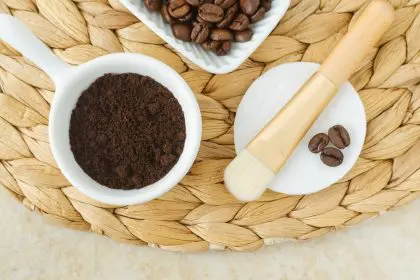Your bank account doesn’t have to suffer for your skin to glow. The beauty industry wants you to believe that sustainable skincare requires expensive organic serums and luxury eco-friendly brands, but the truth is that some of the most effective and environmentally friendly skincare practices cost almost nothing.
Whether you’re working with pocket change or have money to spend, creating a sustainable skincare routine is more about smart choices than expensive products. Your skin and the planet will thank you for focusing on what actually works rather than what’s trending on social media.
The foundation rule that saves money and the planet
Here’s the secret that skincare companies don’t want you to know. The most sustainable skincare routine is the one you actually stick to long-term. That means starting simple, using products completely before buying new ones, and avoiding the temptation to overhaul your entire routine every few months.
Your skin thrives on consistency, not constant change. When you find products that work for your skin type and budget, using them consistently for months or years is both more effective and more sustainable than constantly switching to the latest trending ingredients.
This approach also means less packaging waste, fewer half-used products cluttering your bathroom, and more money staying in your pocket instead of going toward experimental purchases that might not even work for your skin.
The bare minimum that actually works
If you’re working with extremely limited funds, you can create an effective sustainable routine for under $15 per month. Start with just three products a gentle cleanser, a basic moisturizer, and sunscreen. These three steps address the fundamental needs of every skin type without overwhelming your skin or your wallet.
Look for products with minimal packaging, large sizes that last longer, and simple ingredient lists. Many drugstore brands offer refillable options or products in recyclable containers. The key is choosing products you can use consistently rather than splurging on expensive items you’ll need to replace frequently.
The comfortable middle ground
With a moderate budget of $30-50 per month, you can add targeted treatments while maintaining sustainable practices. This tier allows for one or two serums, a separate morning and evening moisturizer, or specialty products for specific skin concerns.
Focus on multi-purpose products that serve several functions. A vitamin C serum that also provides antioxidant protection, a moisturizer with built-in SPF, or a cleanser that also gently exfoliates can give you more benefits without requiring multiple products.
The investment approach
Higher budgets allow for premium sustainable brands, but the key is investing in quality products that last longer and perform better. Look for concentrated serums where a little goes a long way, larger sizes that offer better value, and brands with strong sustainability commitments.
At this level, you can afford to support companies that use renewable energy, sustainable packaging, and ethical sourcing practices. These brands often offer refill programs or take-back initiatives that make your routine even more environmentally friendly.
The DIY sustainable additions that cost pennies
Some of the most effective sustainable skincare practices cost almost nothing. Double cleansing with a basic oil like jojoba or sunflower oil removes makeup and sunscreen more effectively than many expensive cleansers. A simple sugar scrub made from kitchen ingredients provides gentle exfoliation without plastic microbeads.
Facial massage using clean hands or a simple tool like a spoon costs nothing but can improve circulation and product absorption. These techniques work regardless of your budget and add sustainable practices to your routine without adding expenses.
The packaging game changer
Sustainable skincare isn’t just about what’s inside the bottle. Look for brands that use minimal packaging, refillable containers, or packaging made from recycled materials. Some companies offer discounts when you return empty containers, creating a circular economy that benefits both your wallet and the environment.
Buying larger sizes when possible reduces packaging waste per use and often offers better value. A large bottle of cleanser that lasts six months creates less waste than buying smaller bottles every few weeks.
Building habits that last
The most sustainable skincare routine is one that becomes second nature. Start with basic steps you can maintain consistently, then gradually add products as your budget allows and your skin adjusts. This approach prevents the waste that comes from abandoning complicated routines you can’t maintain.
Track what works for your skin and stick with those products instead of constantly chasing new trends. Your skin will be healthier, your routine more sustainable, and your budget more manageable when you focus on consistency over novelty.
Sustainable skincare isn’t about perfection or expensive products. It’s about finding what works for your skin and your budget, then sticking with it long enough to see real results.


















